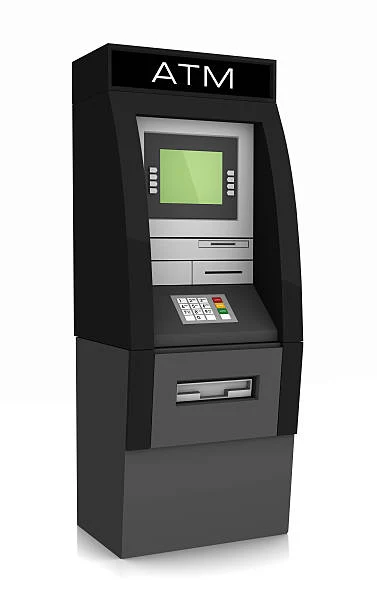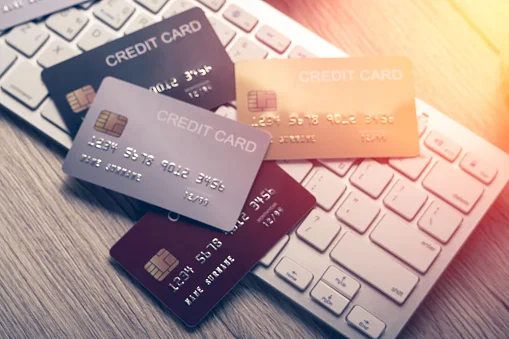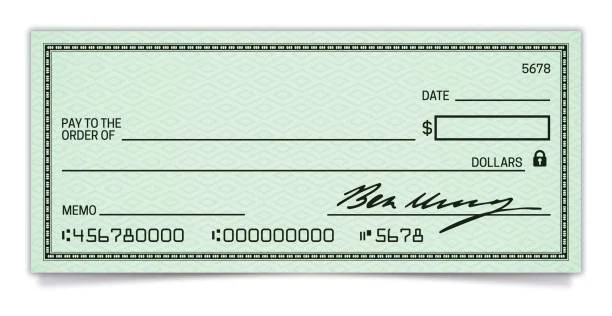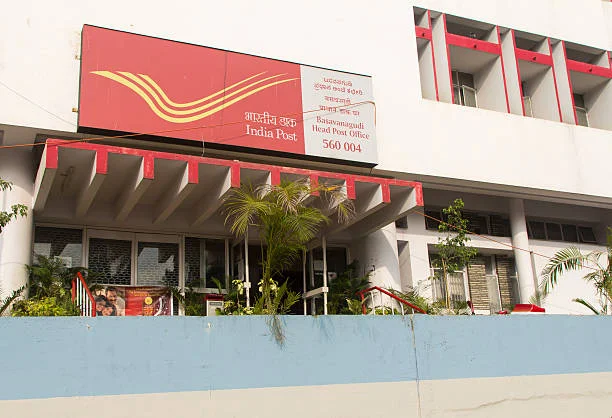MONEY AND BANKING
(Chapter 1)
Notes
MONEY AS A MEDIUM OF EXCHANGE: A person having money can easily exchange it for any other commodity, goods or service that he or she wants. The word “money’ generates a lot of interest. As a buyer, we pay money to buy goods and services and as a seller, we receive money by selling them.As human beings we all have basic needs like food, shelter, clothes etc. Along with these basic needs we have multiplicity of wants. Take the case of a clothes merchant. He wants to sell Clothes and buy Rice. The clothes merchant will first exchange Clothes to sell for money and then exchange the money for Rice. However to obtain money , first he has to find a rice growing farmer who is willing to sell him rice. Imagine how much more difficult it would be for the cloth merchant if he had to exchange clothes directly for Rice without the use of Money. He would have to find a rice growing farmer who would be willing to sell him rice in exchange for clothes. To put it simple both parties have to agree to buy and sell commodities to each other. This problem is known as double coincidence of wants. Double coincidence in nutshell means “what a person desires to sell is exactly what the other wishes to buy”. In earlier times, such kinds of problems were solved by a system known as Barter System. Under Barter System goods were exchanged for goods. Long before money was invented, people exchanged services and goods for other services and goods in return. The main problem which is faced in double coincidence of want is to search for the persons with required excess and need. Such kind of problem was resolved by identification of a common medium of exchange which is acceptable to all. This common medium of exchange acceptable to all is termed as Money.
The term “money” is derived from the Latin word “Moneta''. Money as medium plays an important and crucial intermediate step and in turn eliminates the need for double coincidence of want. Since money acts as an intermediate in the exchange process , it is called a medium of exchange. To put it simply , Money is any medium that can be exchanged for goods and services , or “Anything which is widely accepted in payments for goods or in discharge of other kinds of obligations is money” . Money is legal finder that means legally none can refuse its exchange.
Evolution of Money: The stages of the evolution of money are:-
Animal Money: In the primitive hunting stage animals were used as a common medium of exchange.
Commodity Money: In certain communities in its crudest sense, also took the form of commodity money. A large number of commodities from axes to yarn have been adopted as money.
Metallic Money: The discovery of gold, silver, copper and bronze gradually replaced commodity money as a medium of exchange. Use of metals as money in the course of time paved the way for the development of coinage system in India. Minting of coins removed imperfection of the metallic money in size, shape and weight. Paper Money: In the 17th and 18th centuries paper currency emerged as a modern form of money. it was easy to carry and was convertible.
Sometimes when we need only certain amount of money for our day to day needs , we need to keep our extra cash at a safe place. This means that apart from our currency as a form of holding money, the other form in which people hold money can be as deposits with banks. A Bank is an institution that deals in money. In simple words, bank means an institution which receives funds from the Public and gives loan to those who need them. The important function of Bank is collection of the savings of public. The bank does so by accepting deposits from its customers. The deposits are life line of the Banks. People deposit their extra money in the bank by opening a bank account in their name. Banks accept deposits from the public and also pay some interest on the deposits. In this manner, people feel their money is safe and also earns them some extra amount called interest.
Sometimes when we need only certain amount of money for our day to day needs , we need to keep our extra cash at a safe place. This means that apart from our currency as a form of holding money, the other form in which people hold money can be as deposits with banks. A Bank is an institution that deals in money. In simple words, bank means an institution which receives funds from the Public and gives loan to those who need them. The important function of Bank is collection of the savings of public. The bank does so by accepting deposits from its customers. The deposits are life line of the Banks. People deposit their extra money in the bank by opening a bank account in their name. Banks accept deposits from the public and also pay some interest on the deposits. In this manner, people feel their money is safe and also earns them some extra amount called interest.
- The simplest form of bank account opened by individual
- Interest is given to the depositor Current Account generally maintained by businessmen, Recurring Deposits Fixed Deposits and firms traders.
- No interest is given to the depositor.
- Money in these accounts is deposited in monthly instalment period for fixed.
- Deposits in fixed account are time deposits.
- These accounts give highest rate of interest to the depositor.
OPENING OF SAVINGS ACCOUNT IN A BANK
1. Choose a bank in which you want to open a bank account.
2. Fill up the prescribed application form
3. Submit the filled up application form
4. Receive necessary documents from the bank
For depositing cash in the bank the following steps should be adopted
1. Approach the bank where you have to deposit the cash.
2. Fill up the pay-in-slip
3. Approach the Receipts Counter
4. Take the receipt. As the process of depositing cash has been completed, one should take the properly stamped and signed receipt from the same counter.
5. Once the proper receipt has been acquired, it should be kept at safe and secure place. The safety and security of the receipt is necessary for any future reference. The receipt acts as documentary evidence.
1. Choose a bank in which you want to open a bank account.
2. Fill up the prescribed application form
3. Submit the filled up application form
4. Receive necessary documents from the bank
For depositing cash in the bank the following steps should be adopted
1. Approach the bank where you have to deposit the cash.
2. Fill up the pay-in-slip
3. Approach the Receipts Counter
4. Take the receipt. As the process of depositing cash has been completed, one should take the properly stamped and signed receipt from the same counter.
5. Once the proper receipt has been acquired, it should be kept at safe and secure place. The safety and security of the receipt is necessary for any future reference. The receipt acts as documentary evidence.
Withdrawing money from Saving accounts in Bank
The cash can be withdrawn by two procedures:
1. a) By visiting the branch By filling withdrawal form: The person has to present himself personally and fill up the withdrawal form. The bank official will identify the person through passbook, photograph and Signature on withdrawl form.
b) By Cheque: The cheques can be signed and issued by the account holder on the concerned bank. The bank will issue cash against such cheque. The account holder can himself also withdraw cash through such cheque. The person whose name is written on such cheque can also withdraw cash. With the help of cheques the amount can be transferred from account to account.
2. By using ATM (Automated Teller Machine)
It is a machine controlled procedure. A person, on opening an account, is provided with a card which can be used to withdraw cash by inserting in ATM and following few steps. The machine, after inserting the card, will ask for pin (electronic key) to proceed. After that the machine will ask for options like amount to be drawn etc. At the end of transaction the machine will provide slip showing amount withdrawn and balance remaining with the bank.
The cash can be withdrawn by two procedures:
1. a) By visiting the branch By filling withdrawal form: The person has to present himself personally and fill up the withdrawal form. The bank official will identify the person through passbook, photograph and Signature on withdrawl form.
b) By Cheque: The cheques can be signed and issued by the account holder on the concerned bank. The bank will issue cash against such cheque. The account holder can himself also withdraw cash through such cheque. The person whose name is written on such cheque can also withdraw cash. With the help of cheques the amount can be transferred from account to account.
2. By using ATM (Automated Teller Machine)
It is a machine controlled procedure. A person, on opening an account, is provided with a card which can be used to withdraw cash by inserting in ATM and following few steps. The machine, after inserting the card, will ask for pin (electronic key) to proceed. After that the machine will ask for options like amount to be drawn etc. At the end of transaction the machine will provide slip showing amount withdrawn and balance remaining with the bank.
ROLE OF POST OFFICE IN SAVINGS: The post offices which are found round the corner of the country are located in remote village as well as in modern city centres of the country. The Post Office savings bank is the oldest and by far the largest banking system in the country, serving the investment need of both urban and rural clientele. These services are offered as an agency service for the Ministry of Finance, Government of India. The India Post network with over 155,000 branches is twice as large as the outreach of commercial banks in India put together.
Various Post office Schemes Post Office Savings Account 5-Year Post Office Recurring Deposit Post Office Monthly Income Scheme Senior Citizen Savings Scheme Issue) 15 year Public Provident Fund Account 5 Years National Savings Certificate (VIII 10 Years National Savings Certificate (IX Issue) Fig 15 : Post Office Savings Schemes
Various Post office Schemes Post Office Savings Account 5-Year Post Office Recurring Deposit Post Office Monthly Income Scheme Senior Citizen Savings Scheme Issue) 15 year Public Provident Fund Account 5 Years National Savings Certificate (VIII 10 Years National Savings Certificate (IX Issue) Fig 15 : Post Office Savings Schemes
MODERN FORMS OF MONEY: The modern forms of money include Currency, Demand Deposits , Plastic money (Debit cards, Credit cards). Currency Paper money at present has occupied very important place in the monetary system of all countries. The paper money is used to refer to the government notes i.e. note issued by the central bank of a country. paper notes are accepted as a medium of exchange, because it is authorised by the government of our country. In India currency notes and coins are issued by the Reserve Bank of India on behalf of the government. No person in India can legally refuse a payment made in rupees. Hence, the rupee is a universally accepted medium of exchange in India.Remember that currency notes and coins of India are valid only in India and not in other countries. Every country has its own currency. If you visit other countries, then you have to exchange Indian currency with the currency of that country.
Type of deposit Saving account Description
Plastic money Every country has their own printed currency, however paper money can easily be spoiled and has no durability. Therefore, the use of Plastic money has started and found world wide acceptance. They can come in many different forms such as cash cards, credit cards, debit cards, prepaid cash cards and store cards.
A Credit Card allows the cardholder to pay for goods and services based on the holder's promise to pay for them. The issuer of the card creates a revolving account and grants a limit of credit to the consumer (or the user) from which the user can borrow money for payment to a seller as a cash advance to the user.
BANKING & COMMON MAN: Once you open a bank account you can also withdraw your money as and when it is required. A Saving account is the simplest form of bank account which can be opened by any individual for encouraging savings . In the saving account interest is given to the depositor. Since the deposits with the bank can be withdrawn anytime on demand, these deposits are known as Demand Deposits. Demand deposits share the essential features of money. The facility of cheques against demand deposits makes it possible to directly settle payments without the use of cash. The most common form of payments being made instead of cash is a bank instrument called a Cheque.
A Cheque is a paper instructing the bank to pay a specific amount from the persons account to the person in whose name the cheque has been issued. The maker of a cheque is called the 'drawer', and the person directed to pay is the 'drawee'. The person named in the instrument, to whom or to whose order the money is, by the instrument directed, to be paid, is called the 'payee'. The facility of cheques against demand deposits make it directly possible to settle payments without the use of cash.
The Demand Draft is a pre-paid negotiable Instrument, wherein the drawee bank undertakes to make payment in full when the instrument is presented by the payee for payment. The demand draft is made payable on a specified branch of a bank at a specified centre. This is also called a "remotely created check".
Types of Banks Based on their nature of activities banks can broadly be classified into four types
- Commercial Bank
- Central Bank
- Cooperative Bank
- Specialized Banks.
The Central Bank is an apex financial institution of a country. It issues (prints) notes controls and regulates monetary policy of the country. In India the name of the central Bank is RBI (Reserve Bank of India) Central Bank of India.
Cooperative Bank. In India there are many banks which are run by cooperative societies and are governed by the laws of the state in which they are operating. Such banks are called Cooperative Banks and are of two types - agricultural (or rural) and non - agricultural (or urban). In rural areas cooperative banks provide credit for farming, cattle, fishery etc. In urban areas the cooperative banks provide credit for self employment activities, small scale industry, purchase of durable goods such as television, refrigerator etc. and personal finance.
The post offices which are found round the corner of the country are located in remote village as well as in modern city centres of the country. The Post Office savings bank is the oldest and by far the largest banking system in the country, serving the investment need of both urban and rural clientele. These services are offered as an agency service for the Ministry of Finance, Government of India. The India Post network with over 155,000 branches is twice as large as the outreach of commercial banks in India put together.
Various Post office Schemes
- Post Office Savings Account
- 5-Year Post Office Recurring Deposit
- Post Office Monthly Income Scheme
- Senior Citizen Savings Scheme
- 15 year Public Provident Fund Account
- 5 Years National Savings Certificate (VIII Issue)
- Ten Years National Savings Certificate (IX Issue)







If you have any doubt, suggestion or question, feel free to contact us.